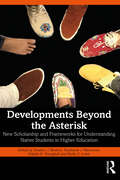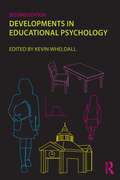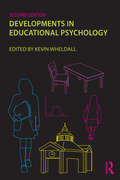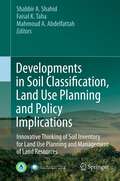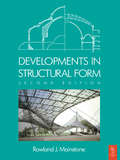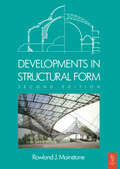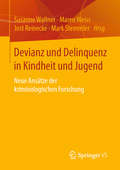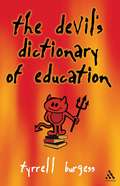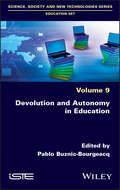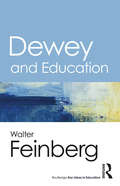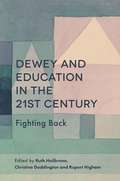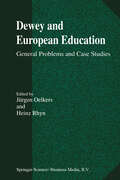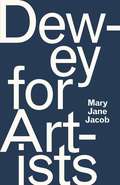- Table View
- List View
Developments Beyond the Asterisk: New Scholarship and Frameworks for Understanding Native Students in Higher Education
This edited volume serves as a follow-up to Beyond the Asterisk: Understanding Native Students in Higher Education, focusing on new scholarship, continued conversations, and growth in the field of Indigenous higher education. The landscape of higher education has changed significantly over the past decade; likewise, Indigenous higher education has grown into its own respective field with emerging scholarship that is written for and by Indigenous people. This book focuses on this growth, revisiting relevant topics in Indigenous higher education, while adding new and expanded research and insight from emerging scholars and practitioners, including chapters on Indigenous LGBTQIA+ and Two-Spirt students and Native Hawaiian and Pacific Islanders. The voices of Indigenous scholars who are challenging the status quo in higher education have grown louder, and institutions and organizations have increasingly begun to respond. This volume is essential to continued conversations in Indigenous higher education and invites current, emerging, and future scholars to carry the conversation forward in respectful, responsible, and relational ways.
Developments In Educational Psychology
by Kevin WheldallReview comment on the first edition "Wheldall asks himself and his readers what has transpired within the field of educational psychology #65533; and what its relevance actually is for teaching, learning and education. As such it is a #65533;must read#65533; for all educational psychologists, students of educational psychology, teachers and teacher trainers. " Professor Paul Kirschner, Open Universiteit, British Journal of Educational Technology What is the relevance of educational psychology in the twenty first century? In this collection of essays, leading educational psychologists reflect on the seminal developments which have been made in the field over the past twenty five years or so and assess how far we have progressed. Given a broad and personal remit to address a range of issues, the contributors review and critique a variety of topics, including: intelligence; communication; family environments; individual differences; reading; peer learning; classroom behaviour; and higher education. Providing provocative and challenging insights into the state of contemporary educational psychology, the contributors acknowledge throughout the successes and progression in the field, but with a critical edge and a challenge being thrown down to psychologists of education to make study more seriously informed and as a consequence, reformed. Now in its second edition this compelling text for students and researchers is thoroughly updated and includes four new chapters.
Developments in Educational Psychology: How Far Have We Come In 25 Years?
by Kevin WheldallReview comment on the first edition "Wheldall asks himself and his readers what has transpired within the field of educational psychology … and what its relevance actually is for teaching, learning and education. As such it is a ‘must read’ for all educational psychologists, students of educational psychology, teachers and teacher trainers." Professor Paul Kirschner, Open Universiteit, British Journal of Educational Technology What is the relevance of educational psychology in the twenty first century? In this collection of essays, leading educational psychologists reflect on the seminal developments which have been made in the field over the past twenty five years or so and assess how far we have progressed. Given a broad and personal remit to address a range of issues, the contributors review and critique a variety of topics, including: intelligence; communication; family environments; individual differences; reading; peer learning; classroom behaviour; and higher education. Providing provocative and challenging insights into the state of contemporary educational psychology, the contributors acknowledge throughout the successes and progression in the field, but with a critical edge and a challenge being thrown down to psychologists of education to make study more seriously informed and as a consequence, reformed. Now in its second edition this compelling text for students and researchers is thoroughly updated and includes four new chapters.
Developments in Educational Psychology
by Kevin WheldallReview comment on the first edition "Wheldall asks himself and his readers what has transpired within the field of educational psychology … and what its relevance actually is for teaching, learning and education. As such it is a ‘must read’ for all educational psychologists, students of educational psychology, teachers and teacher trainers." Professor Paul Kirschner, Open Universiteit, British Journal of Educational Technology What is the relevance of educational psychology in the twenty first century? In this collection of essays, leading educational psychologists reflect on the seminal developments which have been made in the field over the past twenty five years or so and assess how far we have progressed. Given a broad and personal remit to address a range of issues, the contributors review and critique a variety of topics, including: intelligence; communication; family environments; individual differences; reading; peer learning; classroom behaviour; and higher education. Providing provocative and challenging insights into the state of contemporary educational psychology, the contributors acknowledge throughout the successes and progression in the field, but with a critical edge and a challenge being thrown down to psychologists of education to make study more seriously informed and as a consequence, reformed. Now in its second edition this compelling text for students and researchers is thoroughly updated and includes four new chapters.
Developments In Educational Psychology (PDF)
by Kevin WheldallReview comment on the first edition "Wheldall asks himself and his readers what has transpired within the field of educational psychology #65533; and what its relevance actually is for teaching, learning and education. As such it is a #65533;must read#65533; for all educational psychologists, students of educational psychology, teachers and teacher trainers. " Professor Paul Kirschner, Open Universiteit, British Journal of Educational Technology What is the relevance of educational psychology in the twenty first century? In this collection of essays, leading educational psychologists reflect on the seminal developments which have been made in the field over the past twenty five years or so and assess how far we have progressed. Given a broad and personal remit to address a range of issues, the contributors review and critique a variety of topics, including: intelligence; communication; family environments; individual differences; reading; peer learning; classroom behaviour; and higher education. Providing provocative and challenging insights into the state of contemporary educational psychology, the contributors acknowledge throughout the successes and progression in the field, but with a critical edge and a challenge being thrown down to psychologists of education to make study more seriously informed and as a consequence, reformed. Now in its second edition this compelling text for students and researchers is thoroughly updated and includes four new chapters.
Developments in Soil Classification, Land Use Planning and Policy Implications: Innovative Thinking of Soil Inventory for Land Use Planning and Management of Land Resources
by Shabbir A. Shahid, Faisal K. Taha and Mahmoud A. AbdelfattahAs the world’s population continues to expand, maintaining and indeed increasing agricultural productivity is more important than ever, though it is also more difficult than ever in the face of changing weather patterns that in some cases are leading to aridity and desertification. The absence of scientific soil inventories, especially in arid areas, leads to mistaken decisions about soil use that, in the end, reduce a region’s capacity to feed its population, or to guarantee a clean water supply. Greater efficiency in soil use is possible when these resources are properly classified using international standards. Focusing on arid regions, this volume details soil classification from many countries. It is only once this information is properly assimilated by policymakers it becomes a foundation for informed decisions in land use planning for rational and sustainable uses.
Developments in Structural Form
by Rowland MainstoneIn the critically acclaimed first edition of this book, Mainstone offered a brilliant and highly original account of the structural developments that have made possible the achievements of architects and bridge builders throughout history.In this extensively revised and expanded new edition, now available in paperback, new insights and a full coverage of recent developments in both design and construction are incorporated. The book identifies features that distinguish the forms built by man from those shaped by nature and discusses the physical and other constraints on the choices that can be made. It then looks in turn at all the elementary forms - arches, domes, beams, slabs and the like - which combine into the more complex forms of complete structures, and at the different classes of the complete forms themselves. The development of each form is traced chronologically, but with an emphasis less on the chronology than on the problems that designers have continually faced in trying to serve new ends with limited means or to serve old ones in new ways. The book concludes with a chapter on the processes of design, showing how the designer's freedom of choice has been widened by a growing understanding of structural behaviour.
Developments in Structural Form
by Rowland MainstoneIn the critically acclaimed first edition of this book, Mainstone offered a brilliant and highly original account of the structural developments that have made possible the achievements of architects and bridge builders throughout history.In this extensively revised and expanded new edition, now available in paperback, new insights and a full coverage of recent developments in both design and construction are incorporated. The book identifies features that distinguish the forms built by man from those shaped by nature and discusses the physical and other constraints on the choices that can be made. It then looks in turn at all the elementary forms - arches, domes, beams, slabs and the like - which combine into the more complex forms of complete structures, and at the different classes of the complete forms themselves. The development of each form is traced chronologically, but with an emphasis less on the chronology than on the problems that designers have continually faced in trying to serve new ends with limited means or to serve old ones in new ways. The book concludes with a chapter on the processes of design, showing how the designer's freedom of choice has been widened by a growing understanding of structural behaviour.
Devianz und Delinquenz in Kindheit und Jugend: Neue Ansätze der kriminologischen Forschung
by Susanne Wallner Maren Weiss Jost Reinecke Mark StemmlerDieses Buch liefert empirische Befunde zu wichtigen kriminologischen Themen der heutigen Zeit. Die Befunde beziehen sich auf Daten aus umfangreichen Schülerbefragungen in Dortmund und Nürnberg, die im Rahmen eines aktuellen Forschungsprojekts durchgeführt wurden. Thematisiert werden v.a. längsschnittliche Untersuchungen zu deviantem und delinquentem Verhalten bei Kindern und Jugendlichen.
Devilish
by Maureen JohnsonWickedly funny high school satire – what would you give to be popular? Perfect summer read from Queen of Teen 2012!
Devil's Dictionary of Education
by Tyrrell Burgess-A satirical dictionary of key words in education-Inspired by Ambrose Bierce's popular The Devil's Dictionary-The perfect gift for teachersThis A-Z dictionary of educational terms offers funny and thought-provoking definitions of what they *really* mean.administration: n. the whole duty of schools since l988 bar chart: n. patronizing attempt to make statistics palatable by packaging them like chocolatesconsult: v. to seek approval for a course of action already decided upon so as to reassure the perpetrator that he can proceed with impunityeducated: adj. systematically misledgraffiti: n.pl. reliable indicators of the morale of a school, particularly those in the girls' lavatoriesspeech: n. that which in most people precedes thought by anything from half a second to a lifetimeHUMOR / EDUCATION
Devolution and Autonomy in Education
by Pablo Buznic-BourgeacqAllowing learners to take some responsibility may seem obvious yet what is actually afforded to them, and how this process works, remains difficult to grasp. It is therefore essential to study the real objects of devolution and the roles played by the subjects involved. Devolution and Autonomy in Education questions the concept of devolution, introduced into the field of education in the 1980s from disciplinary didactics, and described in Guy Brousseau’s Theory of Didactical Situations in Mathematics as: the act by which the teacher makes the student take responsibility for a learning situation (adidactic) or problem and accepts the consequences of this transfer.The book revisits this concept through a variety of subject areas (mathematics, French, physical education, life sciences, digital learning, play) and educational domains (teaching, training, facilitation). Using these intersecting perspectives, this book also examines the purpose and timeline of the core process for thinking about autonomy and empowerment in education.
Devolution and Autonomy in Education
by Pablo Buznic-BourgeacqAllowing learners to take some responsibility may seem obvious yet what is actually afforded to them, and how this process works, remains difficult to grasp. It is therefore essential to study the real objects of devolution and the roles played by the subjects involved. Devolution and Autonomy in Education questions the concept of devolution, introduced into the field of education in the 1980s from disciplinary didactics, and described in Guy Brousseau’s Theory of Didactical Situations in Mathematics as: the act by which the teacher makes the student take responsibility for a learning situation (adidactic) or problem and accepts the consequences of this transfer.The book revisits this concept through a variety of subject areas (mathematics, French, physical education, life sciences, digital learning, play) and educational domains (teaching, training, facilitation). Using these intersecting perspectives, this book also examines the purpose and timeline of the core process for thinking about autonomy and empowerment in education.
Dewey and Education (Routledge Key Ideas in Education)
by Walter FeinbergDewey and Education presents Dewey’s perspectives on moral psychology and development, human nature, and democratic community-building as they inform the influential philosopher’s deep commitment to educational reform. In this personal yet far-reaching account, Walter Feinberg relates Dewey’s work both to contemporary social and political affairs and to his own philosophical and political commitments. Written for scholars and students of the Philosophy of Education, Educational Policy Studies, and Political Theory, this book is indispensable as a guide to Dewey’s influence on democratic education.
Dewey and Education (Routledge Key Ideas in Education)
by Walter FeinbergDewey and Education presents Dewey’s perspectives on moral psychology and development, human nature, and democratic community-building as they inform the influential philosopher’s deep commitment to educational reform. In this personal yet far-reaching account, Walter Feinberg relates Dewey’s work both to contemporary social and political affairs and to his own philosophical and political commitments. Written for scholars and students of the Philosophy of Education, Educational Policy Studies, and Political Theory, this book is indispensable as a guide to Dewey’s influence on democratic education.
Dewey and Education in the 21st Century: Fighting Back (PDF)
by Dr Christine Doddington Dr Rupert Higham Ruth HeilbronnThis book makes a strong case for the abiding relevance of Dewey’s notion of learning through experience, with a community of others and what this implies for democratic education in the 21st century. Its first section addresses the experience of today’s generation of so-called ‘digital natives’ in terms of how we should now understand ‘knowledge’ and how their online experience creates opportunities and challenges for the curriculum, such as schools linking internationally to study classical texts; an exposition of why makerspaces, hackerspaces and Fab Labs might support Dewey’s democratic communities in our time, with on-line affordances of ‘a commons’, a space to use imagination and invent and share with others. The book’s second section is original in its focus on the central Deweyan idea of ‘embodiment’ with chapters on Dewey and the Alexander technique and on experiences of Afro-American students, in public schools, especially those situated in multi-racial, multi-ethnic countries like the U.S. with deep, racial divides and tensions. The section ends with a chapter on the somaesthetic, educational value of learning outside of buildings. A third section on experience related to democracy and education, has chapters on Dewey and the democratic curriculum, experience as a preparation for democracy, communication and the critique of individualism. Dewey’s notion of interest is analyzed and questioned as to whether it is a sympathetic notion for educational development. With contributions from Spain, Cameroon, the US and the UK the book ranges across varied curricular and policy contexts to explore what reading Dewey can contribute to contemporary education studies.
Dewey and Education in the 21st Century: Fighting Back
by Dr Ruth Heilbronn Dr Christine Doddington Dr Rupert HighamThis book makes a strong case for the abiding relevance of Dewey’s notion of learning through experience, with a community of others and what this implies for democratic education in the 21st century. Its first section addresses the experience of today’s generation of so-called ‘digital natives’ in terms of how we should now understand ‘knowledge’ and how their online experience creates opportunities and challenges for the curriculum, such as schools linking internationally to study classical texts; an exposition of why makerspaces, hackerspaces and Fab Labs might support Dewey’s democratic communities in our time, with on-line affordances of ‘a commons’, a space to use imagination and invent and share with others. The book’s second section is original in its focus on the central Deweyan idea of ‘embodiment’ with chapters on Dewey and the Alexander technique and on experiences of Afro-American students, in public schools, especially those situated in multi-racial, multi-ethnic countries like the U.S. with deep, racial divides and tensions. The section ends with a chapter on the somaesthetic, educational value of learning outside of buildings. A third section on experience related to democracy and education, has chapters on Dewey and the democratic curriculum, experience as a preparation for democracy, communication and the critique of individualism. Dewey’s notion of interest is analyzed and questioned as to whether it is a sympathetic notion for educational development. With contributions from Spain, Cameroon, the US and the UK the book ranges across varied curricular and policy contexts to explore what reading Dewey can contribute to contemporary education studies.
Dewey and European Education: General Problems and Case Studies
by HeinzRhyn JürgenOelkersAlthough John Dewey's ideas have been of central interest in Anglo-Saxon philosophy and history of education, it is only recently that similar interest has developed in continental Europe. Deweyan philosophy of education has had to pass through national filters, which meant that it was received in national contexts of reform. The `German Dewey' was differently construed to the French, Italian, or English Dewey. This seems to change after 1989 (and the fall of socialist education) when interest in Dewey increased. The new political and philosophical interest in Dewey has to do with the lost alternative `socialism', and thus with the opening of Eastern Europe and the new problems of education within a worldwide community. This volume stresses two points. The original interest of European education in Dewey will be presented in case studies, concerning different national contexts and thus different Dewey's. What can be called the renewal of interest will be argued from different sides. It is our intention to show that today's interest in Dewey is not the remake of the reception within the different camps of progressive education. This volume will be of interest to philosophers of education, historians of education, and people engaged in the philosophy, history and the reception of Dewey.
Dewey for Artists
by Mary Jane JacobJohn Dewey is known as a pragmatic philosopher and progressive architect of American educational reform, but some of his most important contributions came in his thinking about art. Dewey argued that there is strong social value to be found in art, and it is artists who often most challenge our preconceived notions. Dewey for Artists shows us how Dewey advocated for an “art of democracy.” Identifying the audience as co-creator of a work of art by virtue of their experience, he made space for public participation. Moreover, he believed that societies only become—and remain—truly democratic if its citizens embrace democracy itself as a creative act, and in this he advocated for the social participation of artists. Throughout the book, Mary Jane Jacob draws on the experiences of contemporary artists who have modeled Dewey’s principles within their practices. We see how their work springs from deeply held values. We see, too, how carefully considered curatorial practice can address the manifold ways in which aesthetic experience happens and, thus, enable viewers to find greater meaning and purpose. And it is this potential of art for self and social realization, Jacob helps us understand, that further ensures Dewey’s legacy—and the culture we live in.
Dewey for Artists
by Mary Jane JacobJohn Dewey is known as a pragmatic philosopher and progressive architect of American educational reform, but some of his most important contributions came in his thinking about art. Dewey argued that there is strong social value to be found in art, and it is artists who often most challenge our preconceived notions. Dewey for Artists shows us how Dewey advocated for an “art of democracy.” Identifying the audience as co-creator of a work of art by virtue of their experience, he made space for public participation. Moreover, he believed that societies only become—and remain—truly democratic if its citizens embrace democracy itself as a creative act, and in this he advocated for the social participation of artists. Throughout the book, Mary Jane Jacob draws on the experiences of contemporary artists who have modeled Dewey’s principles within their practices. We see how their work springs from deeply held values. We see, too, how carefully considered curatorial practice can address the manifold ways in which aesthetic experience happens and, thus, enable viewers to find greater meaning and purpose. And it is this potential of art for self and social realization, Jacob helps us understand, that further ensures Dewey’s legacy—and the culture we live in.
Dewey for Artists
by Mary Jane JacobJohn Dewey is known as a pragmatic philosopher and progressive architect of American educational reform, but some of his most important contributions came in his thinking about art. Dewey argued that there is strong social value to be found in art, and it is artists who often most challenge our preconceived notions. Dewey for Artists shows us how Dewey advocated for an “art of democracy.” Identifying the audience as co-creator of a work of art by virtue of their experience, he made space for public participation. Moreover, he believed that societies only become—and remain—truly democratic if its citizens embrace democracy itself as a creative act, and in this he advocated for the social participation of artists. Throughout the book, Mary Jane Jacob draws on the experiences of contemporary artists who have modeled Dewey’s principles within their practices. We see how their work springs from deeply held values. We see, too, how carefully considered curatorial practice can address the manifold ways in which aesthetic experience happens and, thus, enable viewers to find greater meaning and purpose. And it is this potential of art for self and social realization, Jacob helps us understand, that further ensures Dewey’s legacy—and the culture we live in.
Dewey for Artists
by Mary Jane JacobJohn Dewey is known as a pragmatic philosopher and progressive architect of American educational reform, but some of his most important contributions came in his thinking about art. Dewey argued that there is strong social value to be found in art, and it is artists who often most challenge our preconceived notions. Dewey for Artists shows us how Dewey advocated for an “art of democracy.” Identifying the audience as co-creator of a work of art by virtue of their experience, he made space for public participation. Moreover, he believed that societies only become—and remain—truly democratic if its citizens embrace democracy itself as a creative act, and in this he advocated for the social participation of artists. Throughout the book, Mary Jane Jacob draws on the experiences of contemporary artists who have modeled Dewey’s principles within their practices. We see how their work springs from deeply held values. We see, too, how carefully considered curatorial practice can address the manifold ways in which aesthetic experience happens and, thus, enable viewers to find greater meaning and purpose. And it is this potential of art for self and social realization, Jacob helps us understand, that further ensures Dewey’s legacy—and the culture we live in.
Dewey for Artists
by Mary Jane JacobJohn Dewey is known as a pragmatic philosopher and progressive architect of American educational reform, but some of his most important contributions came in his thinking about art. Dewey argued that there is strong social value to be found in art, and it is artists who often most challenge our preconceived notions. Dewey for Artists shows us how Dewey advocated for an “art of democracy.” Identifying the audience as co-creator of a work of art by virtue of their experience, he made space for public participation. Moreover, he believed that societies only become—and remain—truly democratic if its citizens embrace democracy itself as a creative act, and in this he advocated for the social participation of artists. Throughout the book, Mary Jane Jacob draws on the experiences of contemporary artists who have modeled Dewey’s principles within their practices. We see how their work springs from deeply held values. We see, too, how carefully considered curatorial practice can address the manifold ways in which aesthetic experience happens and, thus, enable viewers to find greater meaning and purpose. And it is this potential of art for self and social realization, Jacob helps us understand, that further ensures Dewey’s legacy—and the culture we live in.
Dewey for Artists
by Mary Jane JacobJohn Dewey is known as a pragmatic philosopher and progressive architect of American educational reform, but some of his most important contributions came in his thinking about art. Dewey argued that there is strong social value to be found in art, and it is artists who often most challenge our preconceived notions. Dewey for Artists shows us how Dewey advocated for an “art of democracy.” Identifying the audience as co-creator of a work of art by virtue of their experience, he made space for public participation. Moreover, he believed that societies only become—and remain—truly democratic if its citizens embrace democracy itself as a creative act, and in this he advocated for the social participation of artists. Throughout the book, Mary Jane Jacob draws on the experiences of contemporary artists who have modeled Dewey’s principles within their practices. We see how their work springs from deeply held values. We see, too, how carefully considered curatorial practice can address the manifold ways in which aesthetic experience happens and, thus, enable viewers to find greater meaning and purpose. And it is this potential of art for self and social realization, Jacob helps us understand, that further ensures Dewey’s legacy—and the culture we live in.
